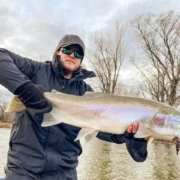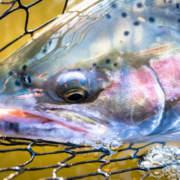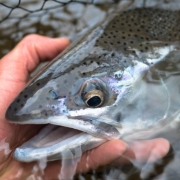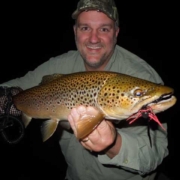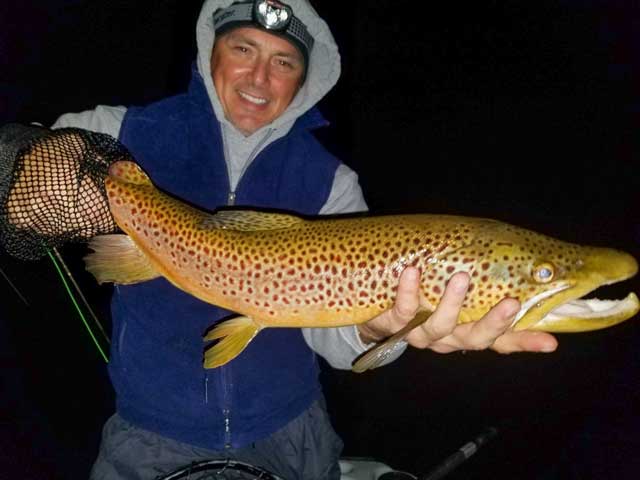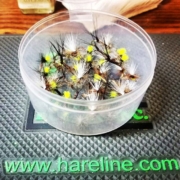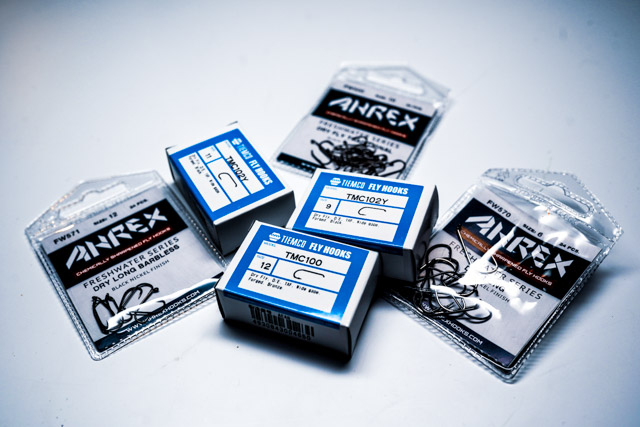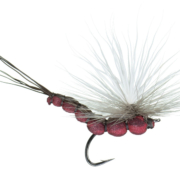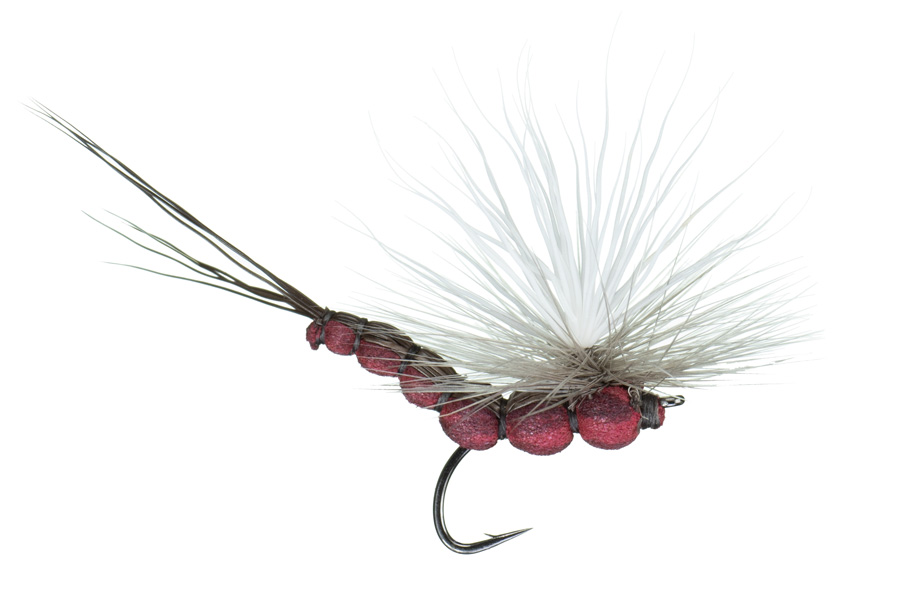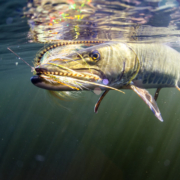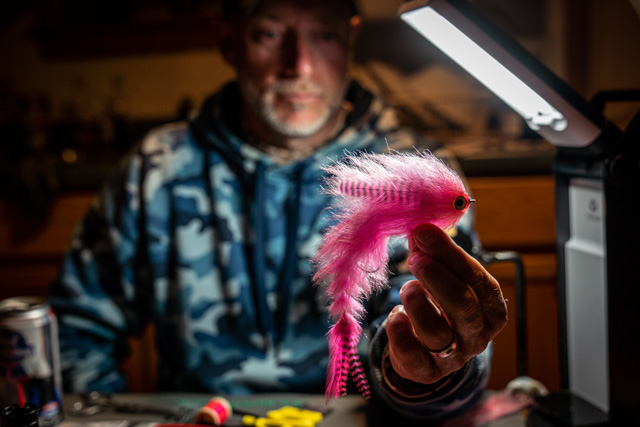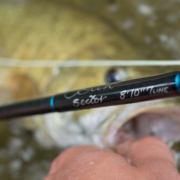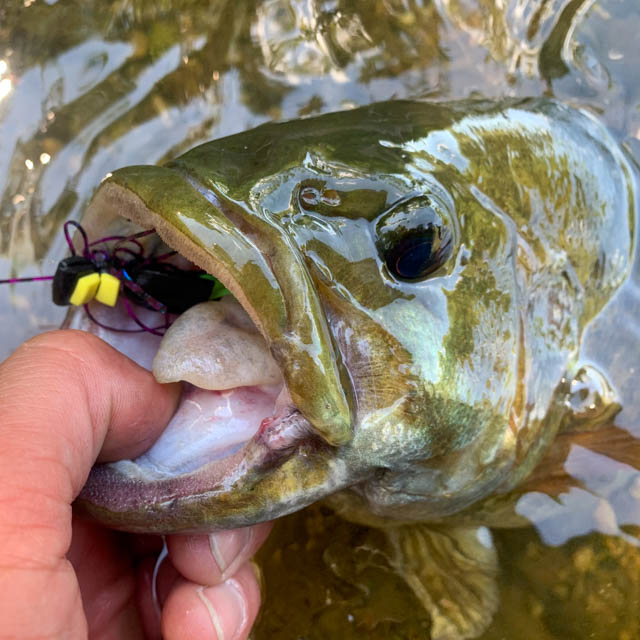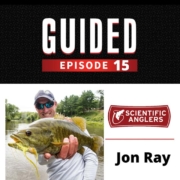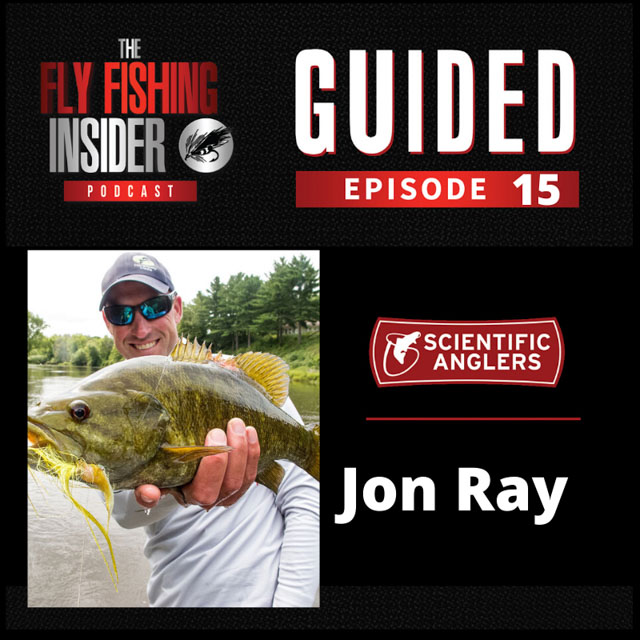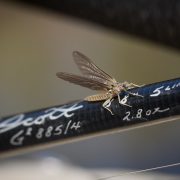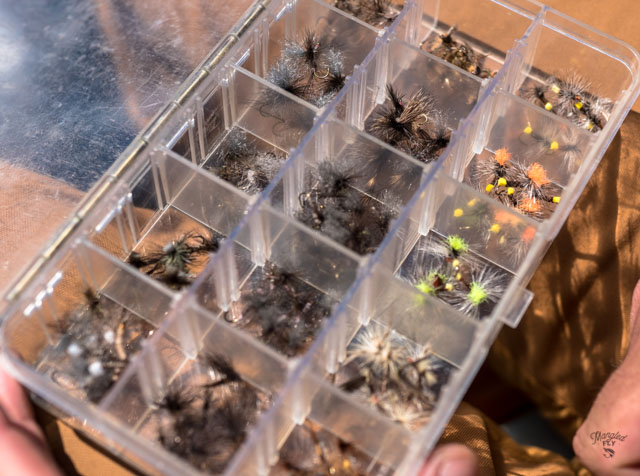Best Fishing Images of 2021
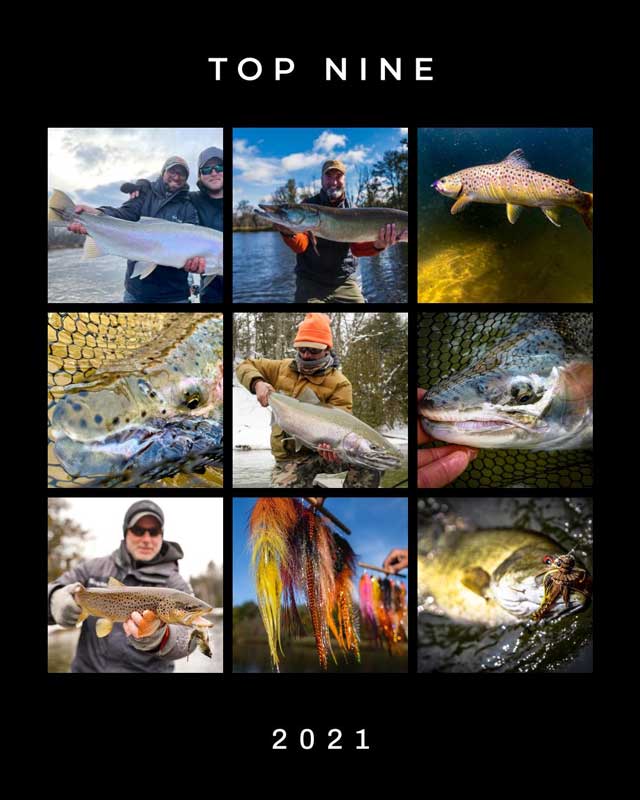
Best Fishing Images of 2021
I thought I would take a moment to reflect on a “best of our fishing images” collage from 2021 from our Instagram Feed. These are the highest liked images from 2021. If you’re not on Instagram or do not follow us via social media, here is a chance to see some of our best liked images. I thought I would go thru a couple of images and expand upon their meanings to us this year.
Also make sure to read until the end, as Ed McCoy goes into detail about a sea monster he has captured two years in a row on the Upper Manistee while mousing the last two years.
- 20 Pound Steelhead – top left image and I believe the most liked image from the whole year. First these don’t come along very often, actually for me personally I have never seen a 20 pounder in the boat. With 20+ years of guiding, and too many personal casts to count I’m still on the hunt. Read more about this awesome guide trip below as Steve Pels goes into more depth about this once in a lifetime fish.
- Big Muskie – Always a great adventure is our month of Muskie fishing, this year was no different as Brian Pitser of The Northern Angler landed the biggest fish on the season, middle image on the top row. This fish was pretty cool, because it was a blind figure 8. Brian did an amazing job of making the big circles required to get this fish to eat his fly. Not only do these fish make great images, but the flies we throw are fun to photograph as well. As you can see on the middle bottom row. Chicken’ sized offerings are sometimes required, bring your big boy rods to this party.
- Underwater Image – every year I always wish I shot more of these, well this year I made a small purchase of new equipment and so far so good. Top right was my first day using the Axis Go and even though a few of my other shots didn’t make the top 2021 images they are my personal favorites.
- Middle Row – is all about the steelhead and for Best Fishing Images steelhead are some of the best images I can get for the likes on the Instagram. Middle row shows of a big spring buck, a true awesome winter specimen , and a big late fall buck that we recently just landed. We are lucky to have these fish in Michigan, and thank you to all that helped us with the new regs and let the DNR and NRC that these fish mean so much to us.
20 Pound Steelhead Highlights

One of the more memorable days in my boat occurred in mid November 2021. My clients were new to me and from our correspondence they have always wanted to try spey fishing but were unsure about it on this trip, thinking indicator fishing could be a good alternative. The night before our trip I double checked about spey fishing and told them that the conditions had been tough, with very low and clear water, not a huge amount of new fish coming in from the lake and a major temperature drop over night. After a short conversation about the challenges we were facing, they responded, ‘let’s go for it.”
On the run upriver in the morning my motor was acting up so I decided to stop sooner than I would have liked at a new run that I had not fished very much. I knew from conversations with my peers that the spot had major swing potential. After arriving to our first spot, we rigged up the spey rods and I began going through the basic mechanics of the cast, how we rig our rods and I jokingly explained rules numbers one, two and three if your fly gets grabbed. Rule 1: “Don’t do anything.” Rule number 2: “Don’t do anything.” Rule number 3: “Only do something when Steve tells you to.” We were getting into a good rhythm of cast, swing and step. My clients caught on quick and were getting their casts and swings dialed in. On our 8th anchor drop, the morning silence was broken by the most gratifying sound of short reel bursts, “ZZZzztt, ZZZzzt, ZZZzzt.” My first response is always, “leave it, leave it, leave it” but at this point, the fish was most likely already hooked. After a few more solid pulls and one sustained scream of the reel, I said, “go ahead and give me a light lift, it’s on!” The fish was clearly not pleased with its situation and proceeded to take multiple runs, jump 7 times and once we thought we had it beat, gator rolled and threw the hook.
Again silence filled the boat. We remained positive throughout the remainder of the day and had a lot of fun telling jokes and getting to know each other. Runs number two through four produced no action and I knew we were losing time. Run number five was a confidence spot and on our 3rd anchor drop my client fishing from the bow gets a promising rip. Then nothing. We worked that spot thoroughly, while thinking that was our last chance. Our time was up for the day but on the way out I thought, we have to hit one more, another confidence spot. We fished another hour after quitting time and I announced “two more casts guys.” On the last casts we were letting the flies hang down a little longer than normal and we admitted that it turned out to be a good swing day – they were pleased they learned how to cast and both got to feel the raw power of a swung fly take. Out of nowhere, the client fishing from the stern froze, his reel was screaming, I said nothing and he confidently lifted the rod, knowing that fish was on.
Its first run took us nearly to backing and each time it neared the boat, ran downriver like it was headed back to the big lake. The fish was tiring, never jumped, but as we were winning the battle, it would make large boils on the surface with its attempt to flee. Finally, the fish neared the boat and I saw a massive silver flash of its flank, I said “big lift!” and with a swift scoop of the net, we had it. This was not an average steelhead, I thought to myself, easy 16-18 pounds. But after lifting it out of the water for a quick photo and measurements, it turned out to be a 36.25” by 20 pound gorgeous wild female. A personal guide/client best in my boat and one that my client and I will never forget.
Two Years in a Row, same trout
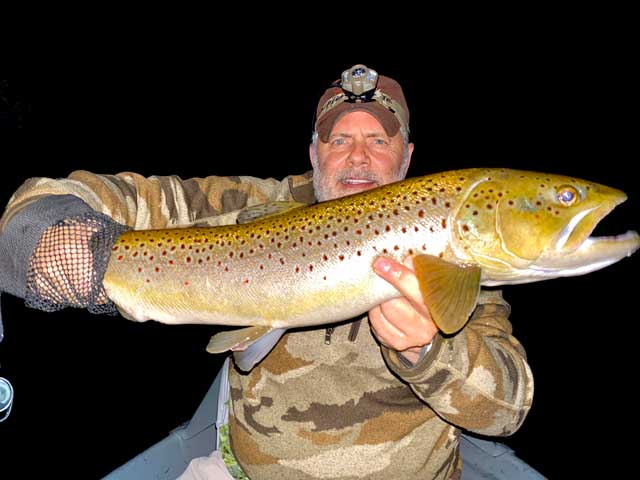
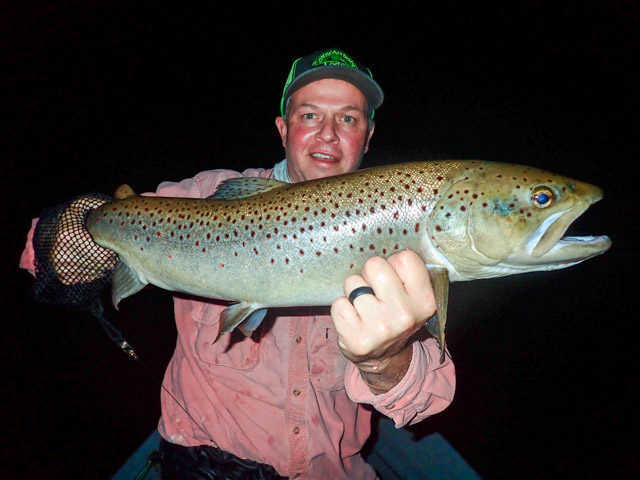
2021 posed a lot of “interesting” scenarios on our local Trout water. Low water, big cold fronts in May, intense heat in early June, then followed by a wet and warm late season. Robert P. Joined me for a couple of nights mousing in August and he landed a personal best and the season’s best Brown Trout on our second night. This fish was truly a treasure, but after further inspection and a gut instinct, it occurred to me that Tim O. landed this same fish in 2020! So what’s the big deal? You knew the exact location where this fish lived, right? The cool part of the story is this fish was caught about 13 miles upstream from her 2020 location!
Kind of a cool story and it makes you think, why the big move? There are lots of factors that play into fish movement, but my best guess is this fish is just nomadic by nature. It also illustrates the importance of catch and release angling allowing future anglers to enjoy the opportunity at a fish of a lifetime!

